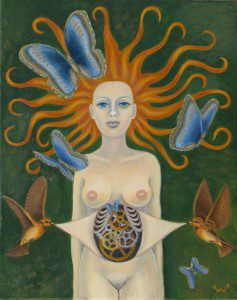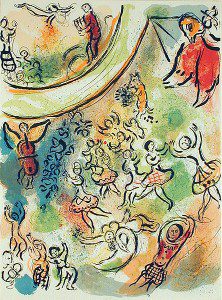
Your departure gate for lucid dreaming and adventures beyond the body is open to you any time you are ready to fly. It is the twilight zone of hypnagogia, the half-dream state on the cusp between waking and sleep and between sleep and waking.
Spend more time in the twilight zone, and you’ll notice a marked increase in both your creativity and your psychic awareness. Going with the flow of spontaneous imagery in the twilight zone puts you into the stream of the creative process. It is no accident that highly creative people — from Einstein to a romance writer and a powerboat designer I met on plane trips — are very much at home in the twilight zone.
In the language of the sleep scientists, the twilight zone is the realm of hypnagogic and hypnopompic experiences. Hypnagogic literally means “leading toward sleep”; hypnopompic means “leading away from sleep.” But these terms do not take us to the heart of the matter. You may enter the twilight zone before and after sleep, but you may also enter it wide awake, with no intention of sleeping. It is not the relationship to sleep that defines the twilight zone; it is its character as a border county In this borderland, you will find the gates to other worlds opening smoothly and fluidly — if you let them and are prepared for what may follow.
When I allow myself to drift through this frontier region with no fixed agenda, I have the sense of leaning through a window or a doorway in space. Sometimes this feels like hanging out of the open hatch of an airplane. I have come to recognize this as the opening of a dreamgate. Depending on circumstances and intention, I can step forward into the next dimension or haul myself back into physical focus.
From this departure lobby, the great explorers of the imaginal realm have used many gates and flight paths. This is why the twilight state has such vital significance in dream yoga, in shamanic training, in the Western Mystery traditions, in the “science if mirrors” of the medieval Persian philosophers, and in other schools of active spirituality.
According to Tantric teachings, it is by learning to prolong this “intermediate state” and to operate with full awareness within it that you achieve dream mastery and, beyond this, the highest level of consciousness attainable for an embodied human. The Spandakarika of Vasagupta, which dates from the tenth century, recommends the use of breathing exercises to focus and maintain awareness as you move from waking into the twilight state. The dreamer is urged to place himself “at the junction between inhaled and exhaled breaths, at the very point where he enters into contact with energy in the pure state.” This is the entry into conscious dreaming, whose gifts (according to Tantric text) could be immense: “The Lord of necessity grants him during dreams the ends he pursues, providing that he is profoundly contemplative and places himself at the junction between waking and sleeping.”
In the Greco-Roman world, the twilight zone was a place of rendezvous with divine messengers and even the gods themselves. Iamblichus, the author of an important book on the Mysteries, urged the need to pay special attention to “god-sent dreams” in the intermediate state, especially after waking: “They come when sleep is leaving us, or we are just waking. We may hear a certain voice that tells us concisely what needs to be done.”
One of my students observes that shamans may operate as hypnagogic physicians, “brushing healing strokes” into the energy body of someone in need of help; and that we may be able to perform this service for ourselves. The twilight zone may be your springboard for anamnesis, for remembering knowledge that belonged to you on the level of soul and spirit before you entered into your present life journey.
There is no ceiling on possibility here.. But first and last, experiment in the twilight zone is wonderful fun.
Adapted from Dreamgates: Exploring the Worlds of Soul, Imagination and Life Beyond Death by Robert Moss. Published by New World Library.

